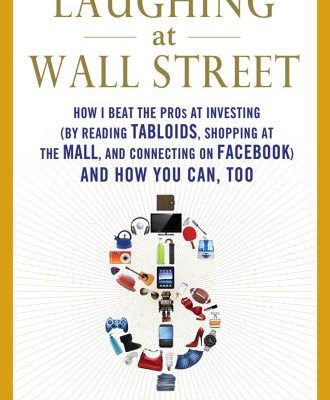
Swing trading is a bit of a risky trading option, but if you have a risk-taking appetite it may work out for you. If a stock is volatile, the value of its options can increase significantly. I wrote this article myself, and it expresses my own opinions. I have no business relationship with any company whose stock is mentioned in this article. Is a situation in which one person’s gains are someone else’s losses — Which means the total benefits are zero.

Once you know what you’re getting into, think about the pros and cons. Remember, no trade is worth risking the health of your trading account. Like pretty much any other type of trading, swing trading can be profitable. In pursuing this strategy, a trader must set a sound entry point. The aim is to be ahead of the curve and get a favorable price.
- Forex, stocks, and futures all require different amounts of capital to start with.
- Whether you are using chart patterns or simple support and resistance levels, it is important to be conscious of the trend across multiple time frames.
- This is done primarily with the help of technical analysis, which studies past trading activity to gain insight into market sentiment.
- No representation is being made that any account will or is likely to achieve profits or losses similar to those discussed on this website.
Support levels are created at a price where buying interest is strong enough to “support” a stock’s price, whereas resistance levels are where selling pressure overcomes buy orders. Swing traders may look to buy off of the support levels and sell near resistance levels. Some investment platforms provide guides to the best stocks to invest in as a swing trader, based on recent price movements and developments within companies. How-to investment guides will walk newcomers through the principles of swing trading. It’s less about the time period and more about trying to milk a trend. A swing trader’s goal is to hold the stock long enough to try to profit from price swings.
By relying on https://forex-world.net/ analysis and holding positions for a short period of time, there is lower risk that you get stuck holding an unliquidated position. In the even you’re stuck holding securities, chances are that neutral market conditions will minimize your losses. Instead of being stuck with securities during strong downtrend conditions, there is often more likelihood of prices rebounding. By analyzing the chart of an asset they determine where they will enter, where they will place a stop loss, and then anticipate where they can get out with a profit. If they are risking $1 per share on a setup that could reasonably produce a $3 gain, that is a favorable risk/reward ratio.
Capital Requirements
That means ideally it’s in a hot sector, riding real news, and hitting its 52-week high. And staying in a position for longer could expose you to greater risk. The lockdown made hot sectors out of at-home fitness, food delivery, and virus-related stocks. At the same time, sectors that rely on people leaving their homes suffered.

The main difference is scalping involves settling for small gains, such as $5-10 profit per trade, while making multiple other trades within a short time frame. Ideally, small gains offset small losses while the small gains add up to a nice overall profit. Typically, scalping trades are much shorter term than swing trades. Day traders buy and sell intraday within one trading session and can last a few minutes to a few hours. Swing traders buy one day and sell another day, ranging from a few days to a few months; it depends on the trader’s strategy. However, traders should understand that the best stocks for day trading are not necessarily the best for swing trading and vice versa.
How to set stop loss in a swing trade
Determine significant support and resistance levels with the help of pivot points. I think that most traders who scale in have become comfortable reading price action so that they do not worry entering as the mkt goes against them. Income averaging is a type of scaling in, and it is one of the most elementary suggestions that financial advisers give to their clients. So, when I think about a swing trade, I’m thinking of two legs, which means I sit through a pull back on route to at least a four-point profit.
It’s often said that bad trading habits are formed during bull markets. Continue to do due diligence and market research on the best securities to hold; while it may seem like every security is a winner, this won’t always be the case. Plan on holding back some capital you may otherwise be trading in the event that securities you are holding do suffer material price declines. Instead of holding for weeks, be prepared to have quicker turnaround on securities you are holding.
For example, if a cup and handle pattern takes weeks to form, then the bullish follow-through will likely take more than a day or two to happen. On the other hand, if the relative strength index is oversold on the hourly time frame, then that trade might play out over a matter of days rather than weeks. The key to risk management in swing trading is to have well-defined entry criteria.

To benefit from swing trading, it’s essential to understand how swing trading works. This form of trading relies on fluctuations in the market, which drive movements in stock prices. Swing traders strive to take advantage of short-term trends to make profits.
These gains despite being smaller can provide a significant amount of returns annually as they are made consistently over time. A trend line is a straight line drawn from a series of highs or lows in price. Trend lines show the direction of the price trend and identify support and resistance levels. Common chart patterns such as trend channels, wedges, and triangles are made up of two trend lines.
Stop-loss orders can be set at any price level and are designed to stop you from losing more in any single trade. On the long side, traders look to profit as the market or stock swings from oversold to overbought, whereas on the short side, traders hope to ride the swing from optimism to pessimism. Swing-trading positions last longer than those of day traders, up to a week ore more as against a single trading session. The RSI can tell you when the market is being overbought or oversold, or if it’s flat or range-bound.
What Is Swing Trading?
Swing traders, on the other hand, typically hold onto trades for days to several weeks or months. This swing trading strategy requires identifying a stock displaying a strong trend and trading within a channel. A channel occurs when an asset’s price moves between two parallel trendlines, with the upper trendline connecting the swing highs and the lower trendline connecting the swing lows in price. Swing traders may use a Fibonacci retracement indicator to identify potential reversals, support, and resistance levels, as well as place stop-loss orders and set target prices. The Fibonacci retracement ratios of 23.6%, 38.2%, and 61.8% are believed to reveal possible reversal levels.
Once you’ve identified the sector you wish to focus on, you go on to pick individual stocks that match your criteria. As such the sector selection is a type of strategy filter, where you only trade stocks of the currently most promising market sector. Multicharts cost more than $1000 dollars for a lifetime license.
What also impacts the https://forexarticles.net/ you need, is the price of the stock you want buying. For example, there are stocks that trade for several thousand dollars each. Naturally, if your trading capital is only a few hundred dollars, those stocks are beyond your reach.
A wave is further a combination of an impulsive and a retracement wave. So when a wave pattern completes on the chart with a swing low or high, it is a high probability signal of trend reversal like in the image below. A Sine wave in mathematics consists of the highest and lowest points.
For example, if a https://bigbostrade.com/ trader sees a bullish setup in a stock, they may want to verify that the fundamentals of the asset look favorable or are improving also. Swing trading is a style of trading that attempts to capture short- to medium-term gains in a stock over a period of a few days to several weeks. Swing traders primarily use technical analysis to look for trading opportunities. Cory is an expert on stock, forex and futures price action trading strategies. Unlike day trading, where trading is extremely fast-paced, swing trading is slower. This strategy is a great way to understand market movements and dip your toe into technical analysis.
Investment Tips
Heavily traded stocks provide plenty of information for prospective investors to help them evaluate and predict market movements. An example of a swing trade would be to identify a stock where the weekly trend is up, and the lows on the day’s bar chart are short and sharp. You would then analyse how the stock has behaved since the trend began.
The EMA gives traders clear trend signals and entry and exit points faster than a simple moving average. The EMA crossover can be used in swing trading to time entry and exit points. Swing traders will use tools like moving averages overlaid on daily or weekly candlestick charts, momentum indicators, price range tools, and measures of market sentiment. Swing traders are also on the lookout for technical patterns like the head-and-shoulders and cup-and-handle.


